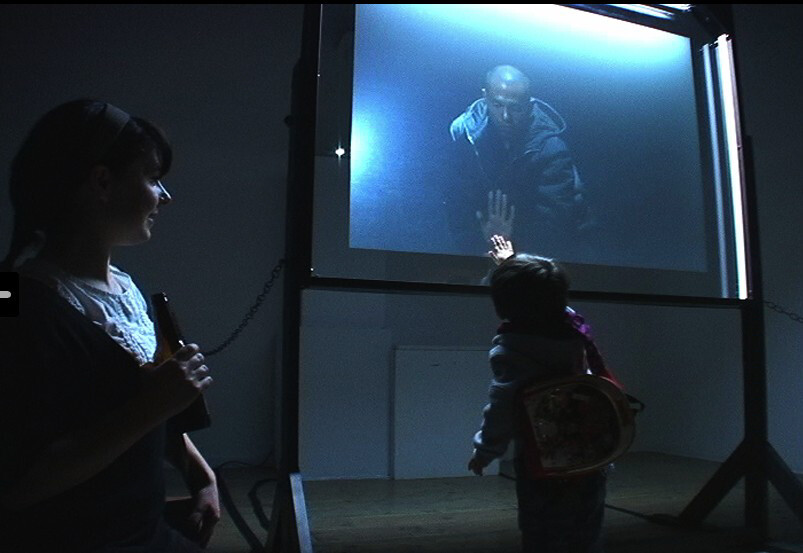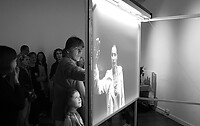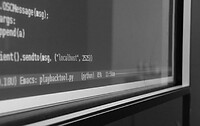In an age where a ruling paradigm regarding technological art is physical interactivity, it’s only natural that one of the oldest visual representation practices, that of portrayal, transforms accordingly. This fact has been acknowledged in literature and cinema, thus interactive portraits have become integrated into our image of the future. Frontera v.2, has been created within this scope of works and could represent a first approach towards realising what others have envisioned. This interactive installation consists of two main components: a videobooth and a playback screen. The videobooth serves as a tool with which spectators can create interactive selfportraits that are shown on the playback screen and react to movement as if they were dissociated mirror images. Touch and communication are key ingredients in this project for which two open source applications were developed.
What did I build?
For this project, I worked together with Robin Gareus on the software. Developing everything from scratch, we created the hand-detection tracker algorithms, and the recording and playback software.


